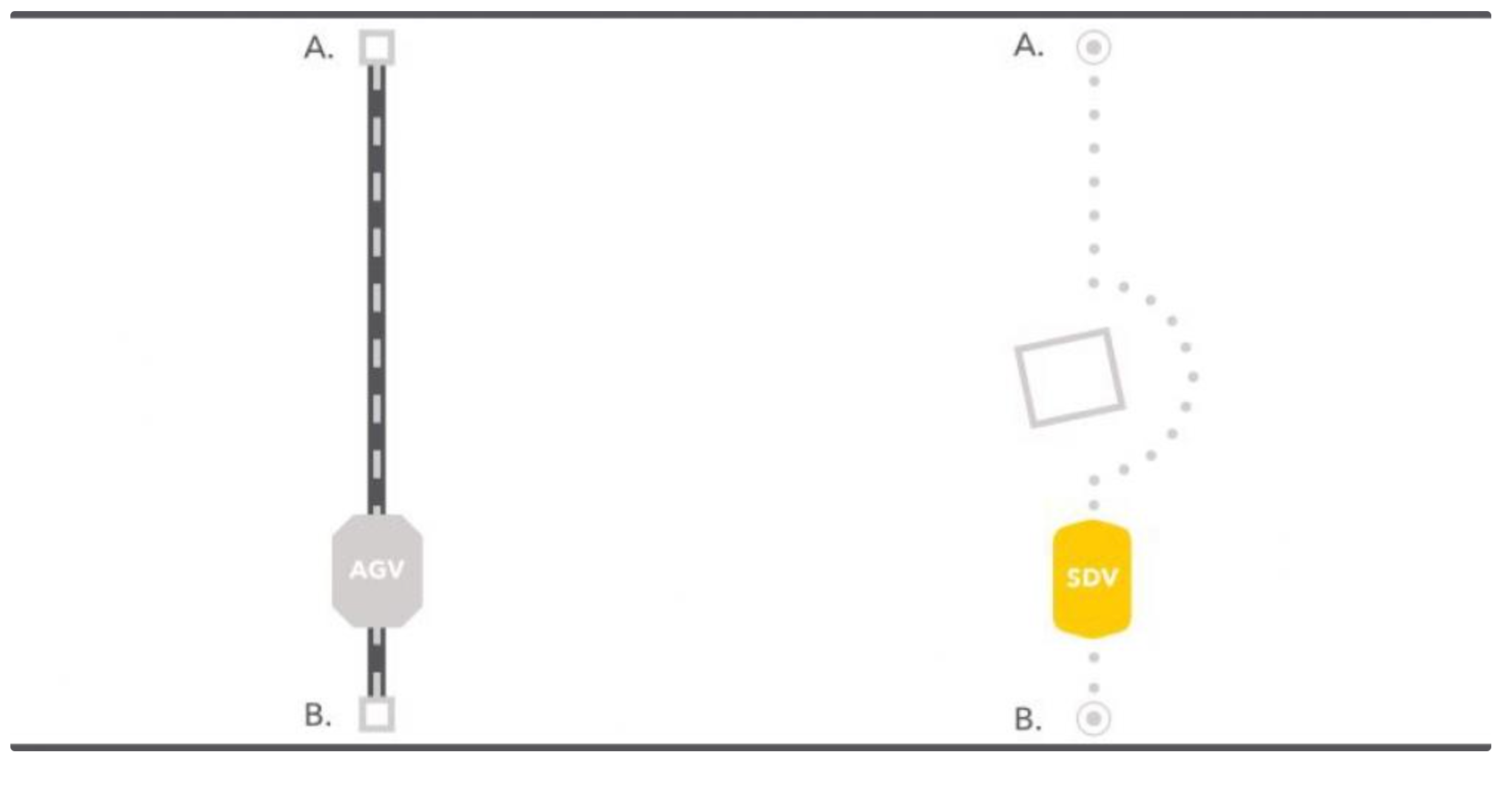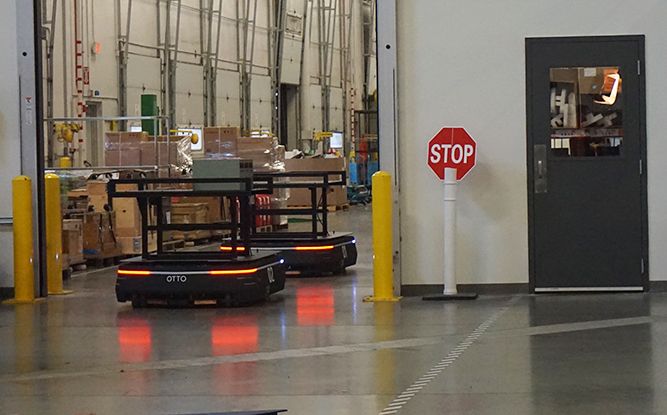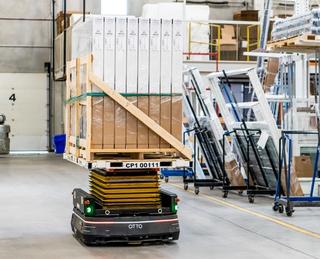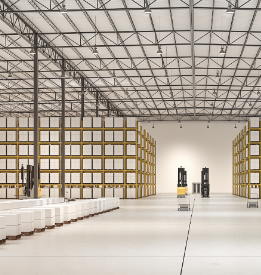Blog
AGVs alternative: Autonomous material transport

There are several types of industrial robotics that have changed how manufacturers and warehouses operate. But, all technologies are not all the same and many are improving.
A prime example is the material transport function and how advancements have moved these types of autonomous vehicles beyond the older technology of AGVs (Automated Guided Vehicles) to AGV alternatives including the modern AMRs (Autonomous Mobile Robots).
It’s common to group both technologies together but the differences are significant and the distinction important.
Why consider AGV alternatives?
At a high level AGVs are electric powered vehicles capable of following programmed pathways around an industrial facility using pre-marked paths or following various types of markers. These markers can be visual beacons or even wires embedded in the facility’s floor. AGVs operate in very much of a stop or go forward process. In other words, there is little decision making done based on the live environment around it.

AMRs are programmed to understand their environment and react to it in real-time. They use information received from their environment by leveraging sensors and software (like lasers, wheel encoders and artificial intelligence) to receive those inputs. This allows the vehicle to be more flexible and efficient in its operation. The technology operates much more dynamically than an AGV, allowing it to problem solve and even learn how to best operate within a situation and overcome obstacles that stop an AGV in its tracks.
Another perspective on the comparison of AGVs and AMRs is to consider that all the discussions about autonomous cars are based on AMR technology, and not AGV (there are no plans to implant wires in roads for outdoor cars to follow). Of course, the debate on how soon autonomous cars will be on the road continues – but for manufacturers, they have already arrived and are providing many benefits.
5 advantages of an AMR over an AGV
- Flexible: AGVs require embedded wires, beacons, or other markings to work, while an AMRs’ sensing capabilities allow it to operate almost instantly within any environment it is placed in. This eliminates much of the time and cost of installing the solution. Static operating systems like ADV make custom manufacturing and continuous improvement solutions much more difficult and costly to implement.
- Scalable: The use of AGVs can only be expanded when the correct infrastructure is updated or expanded, which almost always requires the re-involvement AGV vendors. This adds costs and time delays. Because AMRs are programmed centrally (often by leveraging the IoT), most can be set up and operational in less than a day. This is vital in the modern manufacturing marketplace which demands flexible solutions.
- Re-deployable: The same infrastructure challenges and costs exist when moving AGVs to a new facility or location, there is a big investment in setup. For AMRs, a new implementation is easy. Another advantage is the ability to move vehicles between facilities as a way to deal with seasonality or other changes in demand.
- Intelligent: AGVs are not connected to any other systems within a facility, and by definition not a component of Industry 4.0. AMRs, conversely, are a core operating function of Industry 4.0 because of their ability to sense and share business critical data that helps to improve operations within the facility. This also allows multiple plants to access and share data, reporting, and benchmark KPIs. The machines are not only intelligent on the ground, but provide intelligent insights and support better decision making by operators.
- Usability: Simply put, AGVs are designed to do only basic tasks and need to be serviced as any piece of machinery. AMRs operate as part of a facility’s IoT and are controlled and monitored as a computer application would be, with a clean modern interface.
Robots and autonomous mobile robots are among the most exciting innovations happening in the world right now. And, AMRs in the factory are the best example of that technology in use today. Examining AGV alternatives and recognizing the advantages of AMRs offers great competitive advantage for manufacturing and warehouse operations.







